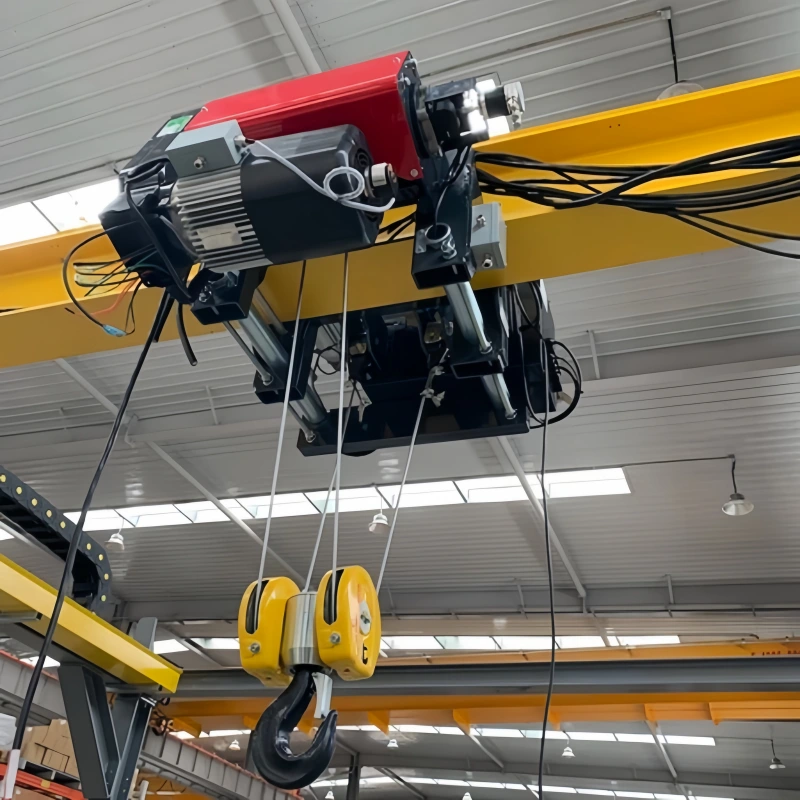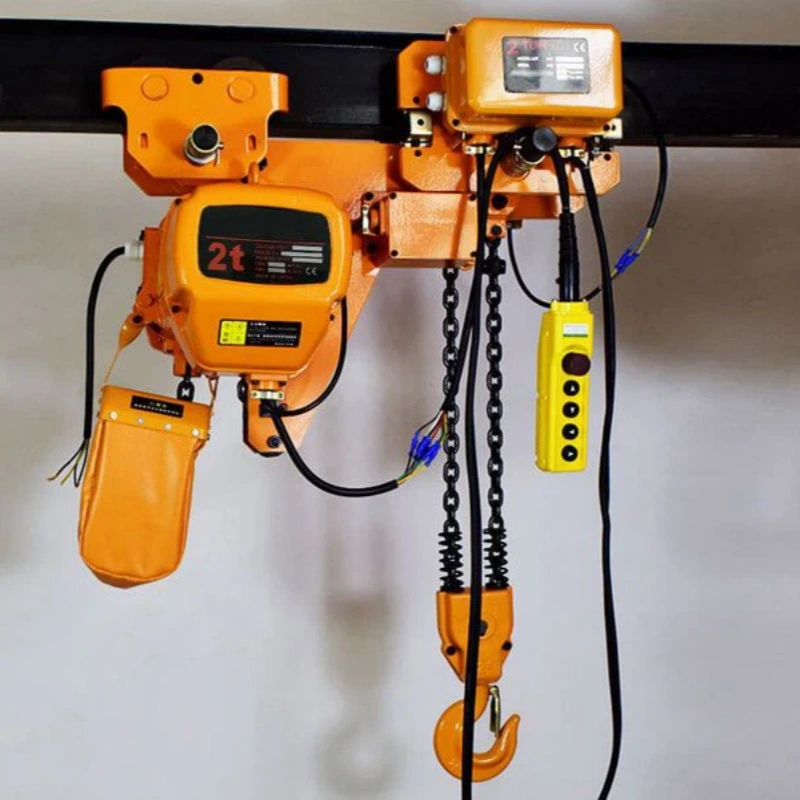You play a critical role in maintaining safety during lifting and rigging operations. Eye bolt safety must remain your top priority, as even a single overlooked eyebolt can compromise an entire lifting process.
Regular inspection and care of each eyebolt help prevent unexpected failures. The table below highlights why you should always check eyebolts before lifting:
Evidence Point | Description |
|---|---|
Regular Inspection | Eyebolts should be periodically examined for wear, damage, and proper installation to prevent failure during lifting operations. |
Proactive Approach | This approach helps maintain safety standards and compliance with regulations, leading to fewer accidents. |
Competent Examination | Eyebolts must be examined by a competent person, and any showing excessive wear or damage should be discarded. |
Powerful Machinery stands for quality and reliability. You can trust their stainless steel eye bolts to deliver dependable performance in every lifting scenario. By following proper eyebolt care and safety guidelines, you help protect your team and equipment during every lifting task.
Key Takeaways
Regularly inspect eyebolts for wear and damage to ensure safety during lifting operations.
Always match the threads of the eyebolt with the receiving hole to prevent loosening and failure.
Use proper torque when tightening eyebolts to maintain a secure connection without damaging threads.
Check the alignment of eyebolts with the load direction to avoid bending and ensure even weight distribution.
Replace any damaged or worn eyebolts immediately to protect your team and equipment from accidents.
Eye Bolt Inspection
A thorough eye bolt inspection helps you prevent failures and maintain safety in every lifting operation. You should always follow a systematic approach before using any eyebolt, especially when handling heavy loads or working in demanding environments.
Powerful Machinery’s Stainless Steel Eye Bolts meet strict international standards, giving you confidence in their reliability. Use the following checklist to guide your eyebolt inspection before use.
Standards and Markings
You must confirm that each eyebolt complies with recognized standards. These standards ensure the bolt’s strength, durability, and suitability for lifting tasks. Powerful Machinery’s Stainless Steel Eye Bolts are manufactured to meet or exceed the following:
ASTM A489
DIN 582 (eye nuts)
Factories use advanced technology and skilled labor to achieve precise manufacturing. You should always check for clear, permanent markings on every eyebolt. These markings indicate compliance with industry benchmarks and provide essential information for safe use.
Aspect | Description |
|---|---|
Standardization | Organizations like ASTM and SAE created marking systems to standardize bolt grades and identify material strength. |
Markings | Common markings include grade indicators, manufacturer’s marks, and material properties. |
Grade or Strength Level | Marks indicate the strength of the bolt, such as SAE Grade 5 or Grade 8, which are easily recognizable. |
Material Properties | Stainless steel bolts may have specific markings like ’18-8′ or ‘316’ indicating their composition. |
Thread Information | Markings show the size and thread type, such as ‘1/2-13’ for SAE or ‘M10-1.5’ for metric bolts. |
Importance of Markings | Clear markings are crucial for safety in applications where bolt failure can lead to significant hazards. |
Identification and Legibility
You must verify that all identification markings are present and easy to read. Legible markings help you confirm the eyebolt’s origin, material, and rated load. Manufacturers use several methods to create these markings:
Hard stamping in low-stress areas to avoid weakening the eyebolt.
Vibro-etching, which uses a series of dots for controlled depth and minimal stress.
RFID technology for advanced tracking, though not always practical.
Always look for the manufacturer’s name and identification. For alloy steel eyebolts, the symbol ‘A’ should be visible. If you find missing or illegible markings, remove the eyebolt from service immediately. Missing identification is a leading cause of failure in lifting operations.
Tip: Never use an eyebolt with worn or unreadable markings. Proper identification is your first line of defense against accidents.
Threads and Holes
Inspect the threads and holes carefully. Clean, undamaged threads ensure a secure fit and prevent loosening during lifting. Use this checklist for thread and hole inspection:
Threads must be free from burrs, corrosion, and damage.
The body should show no distortion, cracks, or excessive wear.
Threaded pins must engage fully, with no cross-threading or excessive play.
Damaged threads require immediate replacement.
Defect Type | Description |
|---|---|
Thread Condition | Threads must be clean, undamaged, and free from burrs or corrosion. |
Body Condition | Check for distortion, corrosion, cracks, thread damage, or wear on the pin hole. |
Thread Engagement | Ensure threaded pins are fully engaged without cross-threading or excessive play. |
Damaged Threads | Eye bolts with damaged threads should be noted. |
You can use visual inspections to spot cracks, corrosion, or deformation. Physical inspections help you confirm that threads fit neatly into a standard nut. For critical applications, consider ultrasonic or magnetic particle testing to detect hidden flaws.
Deformation and Damage
You must check for any signs of deformation or damage. Common issues include:
Missing or worn identification
Bent, cracked, or elongated eyes
Damaged threads
Severe corrosion or pitting
Signs of overloading
Damaged eyebolts are more likely to bend or break under load. Remove any eyebolt showing these signs from service right away. Visual inspection protocols help you spot early warning signs, such as:
Corrosion, rust, or pitting
Visible cracks or bends
Shape distortions like elongation or bulging
Alert: Never attempt to repair or reuse a deformed or damaged eyebolt. Always replace it with a certified product.
Alignment and Surface
Proper alignment and surface condition are essential for safe lifting. During inspection, you should:
Look for heavy wear or corrosion on the eyebolt surface.
Ensure threads remain undamaged and undistorted.
Check for heat damage, weld spatter, or arc strikes.
Confirm there are no unauthorized alterations or repairs.
Verify that tapped receiving holes are clean and show no thread wear.
Make sure the eyebolt meets performance requirements for its intended use.
Routine inspections help you maintain safety and extend the life of your equipment. Use a detailed inspection checklist to cover all aspects, and replace any eyebolt that shows signs of wear, corrosion, or deformation.
Note: Consistent eye bolt inspection protects your team and equipment. Trust only certified products like Powerful Machinery’s Stainless Steel Eye Bolts for critical lifting tasks.
Eyebolt Care and Safety Guidelines
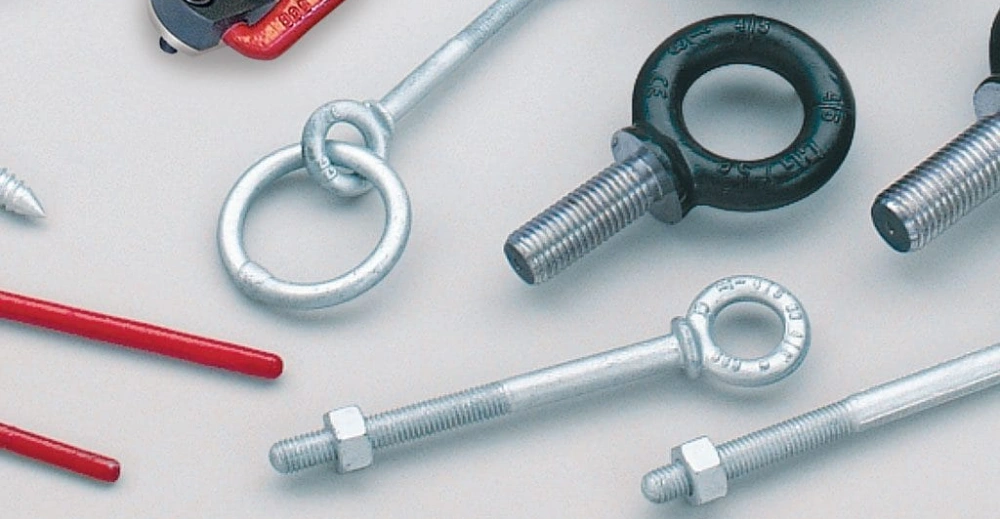
Proper eyebolt care and safety guidelines are essential for every lifting operation. You must follow best practices to ensure the reliability of lifting eye bolts and protect your team during rigging.
Powerful Machinery’s stainless steel lifting eye bolts offer superior performance, but you must install and maintain them correctly to maximize their benefits. The following care and use of eyebolts will help you achieve safe and efficient lifting every time.
Matching Threads
You must always match the threads of the eyebolt with the receiving hole or nut. This step is critical for both safety and performance. When you select lifting eye bolts, check that the thread size, diameter, and pitch match exactly.
Mixing imperial and metric fasteners can cause misaligned threads, making assembly difficult and increasing the risk of stripped threads or loose connections. Always inspect both the eyebolt and the receiving hole for cleanliness and damage before installation.
Ensure the surface is flat, clean, and strong enough to support the load without deforming.
Inspect the threads and receiving holes for debris or damage.
Hand-tighten the eyebolt until it is fully seated. Use a wrench if needed, but avoid overtightening.
Never force a nut or bolt that does not fit properly.
Correct thread matching prevents joint failure and maintains the integrity of your rigging setup. You protect your equipment and your team by following these eyebolt care and safety guidelines.
Proper Tightening
Proper tightening of lifting eye bolts is vital for safety during use. The material and size of the eyebolt, the type of thread, and the surface condition all affect the required torque. You must consider the application and load requirements before tightening.
Hand-tighten the eyebolt until it is fully seated, then use a wrench if necessary. Avoid overtightening, as this can damage the threads and compromise the lifting operation.
The right torque ensures a secure connection.
Surface rust or lubrication changes the friction and affects tightening.
Always follow manufacturer recommendations for torque values.
By applying the correct torque, you maintain the strength of the lifting eye bolts and reduce the risk of failure during rigging.
Alignment
Alignment plays a crucial role in the safe use of eyebolts. You must align the lifting eye bolts with the direction of the load to prevent bending or deformation.
Misalignment can lead to uneven weight distribution, reducing the working load limit and increasing the risk of failure. Always check that the eyebolt is aligned with the sling and the load.
Recommendation | Description |
|---|---|
Load Alignment | Align the hook with the load’s direction to prevent bending or deformity. |
Eye Bolt Alignment | Align the eyebolt with the sling to avoid bending. |
Check Alignment | Verify alignment to prevent side loading, which reduces load capacity. |
Accurate alignment ensures optimal load distribution and supports the overall safety of your lifting and rigging operations.
Tip: Always verify alignment before lifting. Misalignment can cause uneven weight distribution and compromise safety.
Use of Washers
Washers are important accessories in eyebolt care and safety guidelines. You should use washers to distribute the load evenly and prevent the bolt from loosening over time. Washers also ensure proper seating and alignment of lifting eye bolts, enhancing their longevity and safety during lifting operations.
Washers prevent gaps between the shoulder of the eyebolt and the load surface.
They help align the eyebolt with the load direction, ensuring effective load transfer.
Using a steel washer or spacer can improve the stability of your rigging setup.
By including washers in your installation, you extend the life of your equipment and maintain safety during use.
Avoiding Small Eyebolts
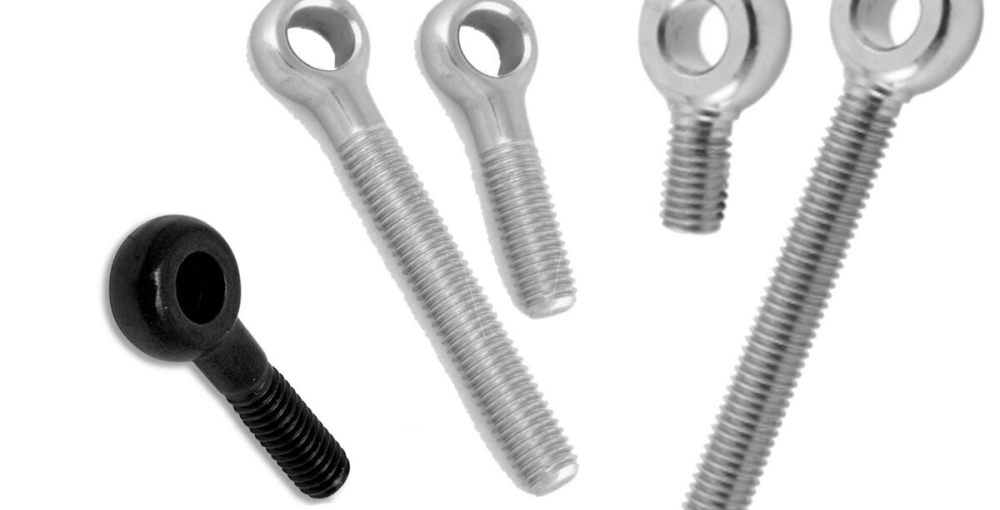
You must avoid using small eyebolts for heavy lifting tasks. Small eyebolts are not designed to handle large loads or angled lifts. Using the wrong type of eyebolt can create unsafe conditions and reduce the working load limit.
Traditional eyebolts are intended for straight, in-line lifts. When you use them at angles below 45 degrees, the working load limit drops significantly, increasing the risk of failure.
Never use eyebolts at angles below 45 degrees.
Always select the correct size and type of lifting eye bolts for your application.
Be cautious of unintended load movements, which can endanger people and property.
Following these eyebolt care and safety guidelines helps you avoid common hazards and ensures reliable performance in every lifting and rigging operation.
Alert: Always choose the right lifting eye bolts for your task. Consult manufacturer guidelines and never exceed the recommended working load limit.
By following these care steps, you maintain the integrity of your rigging system and promote eye bolt safety. Powerful Machinery’s stainless steel lifting eye bolts, when installed and maintained according to these guidelines, deliver unmatched reliability and performance in all lifting applications.
Inspection of Eyebolts in Use
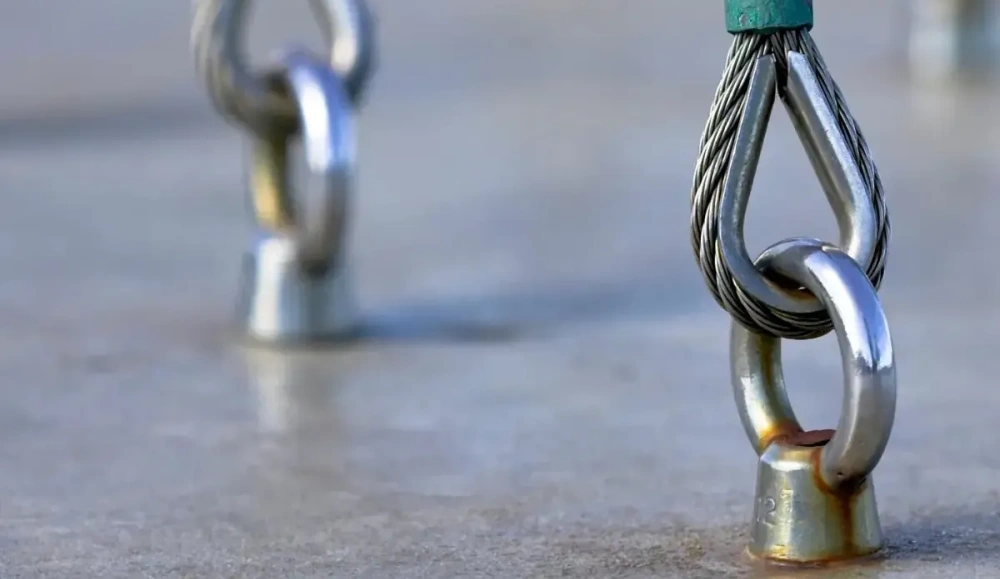
Load Limits
You must always understand the working load limit when performing an inspection of eyebolts. The working load limit represents the maximum load that lifting eye bolts can safely handle during lifting. Manufacturers determine this value based on a straight vertical lift.
If you use an eyebolt for an angular lift, the working load limit drops sharply. You should avoid angular lifts whenever possible. If you must lift at an angle, use a properly seated shoulder-pattern eyebolt and keep the angle below 45 degrees. Always apply loads in the plane of the eye, not at an angle.
Working load limits for eyebolts are based on vertical lifts.
Angular lifts reduce the working load limit significantly.
Never exceed a 45° pull during lifting.
Calculate each lift’s angle to ensure safety.
You protect your team and equipment by respecting these limits during every inspection of eyebolts in use.
Sling Angles
Sling angles play a critical role in safe lifting and rigging. As the angle between the sling and the vertical increases, both sling and eyebolt strength decrease. You must always check sling angles during inspection of eyebolts. The table below shows how the sling angle affects capacity:
Angle (Degrees) | Sling Capacity (%) | Eye Bolt Capacity (%) |
|---|---|---|
0 (Vertical) | 100 | 100 |
45 | 71 | 30 |
Tip: Keep sling angles as close to vertical as possible. Sling angles greater than 45° can overload both the sling and the eyebolt, risking failure during lifting.
Approved Hardware
You must use only approved hardware with lifting eye bolts. During inspection of eyebolts, verify that all components meet international standards and are compatible with your rigging setup.
Approved stainless steel grades for eyebolts include AISI 304, AISI 316, and Duplex 2205. These materials offer high strength and corrosion resistance, making them ideal for lifting and rigging in harsh environments.
Grade | Description | International Standards |
|---|---|---|
AISI 304 | Austenitic, corrosion-resistant | ASTM A193, EN 10088, JIS G4303 |
AISI 316 | Marine-grade, Mo-alloyed SS | ASTM A276, BS 970, DIN 17440 |
Duplex 2205 | High strength, chloride stress resistance | ASTM A479, EN 1.4462 |
You must always select the correct type, size, and material for each eyebolt. Poor-quality or mismatched hardware can lead to failure under load. Always check for clear markings, manufacturer identification, and rated load during every inspection.
By following these guidelines, you ensure safe lifting and reliable rigging performance.
Common Eyebolt Mistakes
Mistakes during eyebolt installation or use can lead to serious hazards. You can prevent most incidents by understanding these common errors and following eye bolt safety standards.
Mismatched Threads
You must always match the threads of the eyebolt with the receiving hole or nut. Using mismatched threads can cause the eyebolt to loosen or fail under load. Clean and compatible threads ensure a secure fit.
Powerful Machinery recommends checking both the eyebolt and the mating component before every lift. Never force an eyebolt into a hole that does not match.
Over-Tightening
Over-tightening lifting eye bolts can damage the threads and reduce their load capacity. You should hand-tighten the eyebolt until it is fully seated, then use a wrench only if necessary. Applying too much torque can strip threads or deform the bolt. Always follow the manufacturer’s torque guidelines to maintain safety.
Improper Attachment
Improper attachment is a leading cause of eyebolt failure. You must align the lifting eye bolts with the direction of the load. Never run a sling from one eyebolt to another, as this creates dangerous side loading.
Avoid shock loading, which happens when you apply a sudden force to the eyebolt. Always use approved hardware and confirm the working load limit matches your application.
Tip: Never paint eyebolts. Paint can hide cracks, corrosion, or other signs of wear, making inspection difficult.
Ignoring Damage
Ignoring damaged eye bolts puts your team and equipment at risk. You should inspect every eyebolt for cracks, corrosion, or deformation before use. Never use worn or modified eyebolts.
Do not attempt to repair or machine an eyebolt, as this can lower its working load limit. Remove any damaged eye bolts from service immediately.
Mistake | How to Avoid |
|---|---|
Mismatched Threads | Check thread size and pitch before installation. |
Over-Tightening | Follow torque recommendations and avoid excessive force. |
Improper Attachment | Align with the load direction and avoid side loading. |
Ignoring Damage | Inspect regularly and replace damaged eye bolts. |
By following Powerful Machinery’s safety standards and these guidelines, you help ensure reliable lifting operations and maintain a safe work environment.
Guidelines Summary
Key Inspection Steps
You should always follow a clear process when inspecting each eyebolt. Start by checking for visible markings and verifying compliance with international standards.
Examine the threads for cleanliness and damage. Look for any signs of deformation, corrosion, or wear. Confirm that the eyebolt aligns with the load direction and that the surface is free from cracks or unauthorized repairs.
Inspect markings and identification for legibility.
Check threads and holes for damage or debris.
Remove any eyebolts showing signs of wear, corrosion, or deformation.
Verify alignment and surface condition before every use.
Note: Consistent inspections help you prevent failures and maintain a safe work environment.
Essential Care Tips
Proper care extends the life of your equipment and supports safety. Always match the threads of the eyebolt and the receiving hole. Tighten the eyebolt to the recommended torque, avoiding over-tightening. Use washers to distribute the load evenly.
Select the correct size and type for each lifting task. Avoid using small eyebolts for heavy or angled lifts.
Care Tip | Benefit |
|---|---|
Match threads | Prevents loosening and failure |
Use the correct torque | Maintains a secure connection |
Add washers | Distributes load evenly |
Select the proper size | Ensures safe lifting |
Following these guidelines helps you achieve reliable performance in every lifting operation.
Compliance and Support
You must use only certified products that meet international standards. Powerful Machinery’s stainless steel eye bolts comply with DIN 580 and JIS 1168, ensuring quality and reliability.
If you have questions or need technical support, visit our official website or contact our team for expert assistance. Their specialists can help you select the right products and provide guidance on installation and inspection.
For further support or custom solutions, reach out to Powerful Machinery’s customer service. Your commitment to safety starts with the right equipment and expert advice.
Conclusion
You play a vital role in maintaining safety during every lifting operation. Regular eyebolt inspection and proper care help you prevent accidents and extend equipment life. Always follow the guidelines for installation, alignment, and load limits.
Choose certified products like Powerful Machinery’s Stainless Steel Eye Bolts for reliable performance. Stay vigilant, review your eyebolt setup often, and reach out to experts for support when needed.
FAQ
What materials do Powerful Machinery’s eye bolts use?
You get eye bolts made from premium stainless steel, usually 304 or 316 grade. These materials resist corrosion and provide strength for demanding lifting and rigging tasks.
How often should you inspect your eye bolts?
You should inspect eye bolts before each use and schedule regular checks based on your operation’s frequency. Replace any bolt showing wear, corrosion, or damage.
Can you use stainless steel eye bolts outdoors?
Yes, you can use them outdoors. Stainless steel resists rust and corrosion, making these eye bolts ideal for marine, construction, and outdoor environments.
What standards do Powerful Machinery’s eye bolts meet?
You receive eye bolts that comply with international standards like DIN 580 and JIS 1168. These certifications ensure safety, quality, and reliable performance in every application.
Where can you get technical support or custom solutions?
You can visit Powerful Machinery’s official website for expert advice, technical support, or to request custom-engineered solutions for your lifting needs.

